Hyundai Tucson Hybrid Vs Toyota RAV4 Hybrid Comparison: Fuel-Sipping Family Haulers

Hyundai’s coming at the king.
The Toyota RAV4 has been the best-selling non-pickup in the US and Canada for years now. In America, the Hyundai Tucson was ninth—not overall, but in the compact crossover class. Toyota sold nearly three and a half times the number of RAV4s: 430,387 to 123,657.
Those are the overall figures; what’s more impressive is how around 28 percent of RAV4s are the hybrid model, a number that is consistently climbing. More over, the split would be even higher if Toyota could build ’em fast enough. There are waitlists: clearly, the RAV4 Hybrid is the desirable one.
So it makes sense that Hyundai has added a hybrid model of its own to the 2022 Tucson family. The new model is bigger, bolder, and better-equipped than the one it replaces. We liked the Tucson hybrid a whole bunch in our initial review, but how does it stack up against the standard of the class? Managing editor Kshitij and I spent a week with both to find out.
Get a Quote on a New Toyota RAV4 or Hyundai TucsonInterior and Cargo Space
Tucson: Stepping into the Tucson, there’s a distinctly upscale feel to the surroundings. The wraparound dashboard, the waterfall center console angled slightly towards the driver, the slim-line vents—it’s a soothing place to be. Material quality depends on where you’re looking: it’s better up top, while the lower center console is quite brittle. There’s also a massive amount of piano black, so enjoy it for the 18 nanoseconds it remains clean. 64-color LED ambient lighting does make it a more interesting night-time ride, however.
Neither of us are fans of the push-button shifter, either. We understand why Hyundai has gone that way (Smart Park) but on more than one occasion it doesn’t engage as expected. Judicious jabs required, then.
Storage space is ample, with large door pockets, a deep center console, and small cubbies on either side of the transmission tunnel.
North America receives the “long-wheelbase” version of this new Tucson. That translates to ample space in all directions. In fact, bar rear head room (38.7 inches / 983 millimeters) and shoulder room (56.0 inches / 1,422 mm), the Tucson is either close to or much more generous than the RAV4. Front headroom is 38.1 inches (968 mm), but the Tucson does have a large panoramic moonroof to let the light in. Legroom is a long 41.4 inches (1,052 mm) up front, and barely different in the rear at 41.3 inches (1,050 mm). Three adults can sit in the rear for medium-length journeys without issue, thanks to a healthy 53.9 inches (1,369 mm) of hip room.
With all seats in their upright positions, the Tucson hybrid offers up 38.7 cubic feet (1,096 liters) of storage space. Drop the second row and that figure balloons to 80.3 cubes (2,274 L). The load opening is nice and square.
RAV4: The RAV4’s truck-like cues carries over inside, with chunky styling and big, easy-to-use controls. There’s a usefulness to the dashboard design as well, with small shelves beside the wheel and ahead of the passenger to store knick knacks. Fit and finish is typical Toyota consistent. Both of us appreciate the grippy rubber found on important touch points, like the climate controls and door handles. The matte plastic around the drive mode selector might not be the prettiest, but we’ll take it over the fingerprint factory that is piano black any day. Same with the traditional shifter. Toyota uses blue contrast stitching to denote the sportier XSE trim, but we wouldn’t be opposed to it also treating the cubbies to the color too, a la the red bits in the TRD Off-Road.
SEE ALSO: 2020 Toyota RAV4 TRD Off-Road ReviewThe RAV4 is plenty comfortable up front. The fabric/SofTex seats offer good support, though only the driver enjoys power adjustments. Breaking out the tape measure, front-seat passengers get 37.7 inches (957 mm) of headroom and 40.9 inches (1,040 mm) of legroom. Rear passengers get much more headroom (39.4 inches / 1,002 mm) and much less legroom (37.8 inches / 960 mm). It’s fine for adults, but there is much less hip room in back (47.7 inches / 1,212 mm), so three-wide can be hard, for people or car seats alike. The tradeoff with all that headroom is the lack of a panoramic sunroof, which makes the back row a little dark.
Swing out back, and you’ll find 37.5 cu-ft (1,059 L) of storage, barely less than the Tucson. At 69.8 cubes (1,977 L) with the seats down, the Toyota gives away more space in two-seat form, but it’s load space is slightly taller. Both trucklets offer false floors that can be lowered for even more space.
Bottom Line: A few ergonomic quibbles aside, the Tucson gets the jump here. It’s more spacious, and its interior design is more impressive.
SEE ALSO: Kia Sorento vs Toyota Highlander Hybrid Comparison: Suburban SUV ShowdownTech and Features
Tucson: This being the top-o-the-line model, the Tucson hybrid benefits from a larger 10.25-inch central infotainment screen. It’s the prettier and quicker of the two, but there are issues. The lack of physical controls means passengers need to poke the capacitive touch volume “buttons” repeatedly. Same goes with the climate controls.At least the driver still has redundant wheel-mounted buttons for the tunes.
The Tucson also benefits from a spiffy digital instrument panel the same size. It’s very useful, able to pull up various bits of information easily. Despite the lack of cowl, it also doesn’t suffer from glare. Customizable themes give it a bit of flavor—the cubes are still weird, though.
Other goodies include eight-way power adjustable front seats, along with heating and ventilation. The rear seats are heated as well. Four USB ports dot the interior: two in front, two in back.
RAV4: If you’ve read any of our many Toyota reviews and comparisons the last year (Exhibit A, B, C, et al), you know what we’re going to say here. Entune is an infotainment dinosaur, slow and laggy. The 8.0 inches of screen real estate makes it fiddly, too.
But Toyota understands the value of physical controls. There’s no need to reinvent the tuning and volume knobs. Down below the screen are the climate controls, also easy-peasy to operate without looking.
This XSE tester features the Tech Package, which adds in such goodies as the wireless charger, digital rearview mirror, and an upgraded JBL sound system. The RAV4 only has heated front seats, however: to match the Tucson’s cooled fronts and heated rears requires a jump up to the Limited trim.
SEE ALSO: Toyota RAV4 vs Nissan Rogue ComparisonBottom Line: The Hyundai crams in more tech, no doubt. You’d need to graduate to the top RAV4 Limited trim to match the Tucson on some fronts, and even then it comes up short, lacking items like the digital instrument cluster and power-adjustable front passenger seat. That said, even your grandma can figure out the more intuitive layout of the RAV4. This one’s close, so we’re calling it a tie.
Powertrain, Driving Feel, and Fuel Economy
Tucson: Under the hood of every Tucson hybrid model sits a 1.6-liter turbocharged four-cylinder engine. On its own it produces 180 horsepower and 195 pound-feet of torque. A 59-horsepower, 195-pound-foot electric motor augments that, and thanks to the wonders of vastly different power curves, the combined outputs are 227 hp and 258 lb-ft. A six-speed automatic handles shifting duties, and all Tucson hybrids come standard with all-wheel drive. Unlike the RAV4, the Tucson uses a mechanical AWD system, so it can send both gas and electric torque rearwards.
Around town, the Tucson rides with a bit more of an edge than the RAV4. It’s by no means rough, but it is the firmer of the two. The Hyundai remains composed over bumps and expansion joints. Steering weight is perfectly adequate for the Tucson’s mission statement, a reassuring amount of heft in contrast to the Toyota’s lightness. The cabin is well insulated from the din of the outside world, too.
In the Tucson’s favor, the drivetrain feels outright stronger than the RAV4’s when merging onto the highway. There is a slight amount of turbo lag however, something the RAV4 doesn’t have to contend with. The decision to go with a six-speed automatic instead of the usual CVT fair has its pros and cons, too. On the plus side, the Tucson behaves like a regular car, without all that high-rev buzzing the RAV4 is guilty of when the fuel starts burning again. On the other hand, with only six gears, sudden heavy throttle application can sometimes catch it out, as there’s a wait for the right cog.
Fuel economy ratings for the Tucson Hybrid are 37 mpg city, 36 mpg highway, and 37 mpg combined. The Canadian equivalents are 6.3, 6.6, and 6.4 L/100 km, respectively. The base-model Blue trim bumps the figures up to 38 mpg across the board. During the week with us, the Tucson scored an easy 39.2 mpg (6.0 L/100 km).
RAV4: Toyota sticks to a 2.5-liter inline-four cylinder engine, without turbo, for the RAV4 Hybrid, like the gas models. This one runs on the leaner Atkinson cycle, however, spitting out 176 horsepower and 163 lb-ft on its own. Toyota pairs this with not one but two electric motors; a 118-hp, 149-lb-ft item up front, and a 54-hp, 89-lb-ft motor on the rear axle. Combined system output is 219 hp (Toyota doesn’t quote a torque figure). With no mechanical connection between the axles, the RAV4 boasts electronic AWD: the rear motor spins the rear tires when needed, but can otherwise stay out of the equation to help with fuel economy. A continuously-variable transmission (CVT) is the only transmission option.
SEE ALSO: 2020 Honda CR-V Review: A Cross For The Weekend?The RAV4 gains a sportier front suspension tune for this XSE trim. Even still, riding on its 18-inch tires, it has a softer ride than the Tucson. It steers with precision, going where it’s pointed without complaint or much body lean. The steering is a little light for our tastes, but we like the natural weighting of the pedals. The CVT still has a habit of revving up into a dull drone when the engine wakes up, however. More outside noise makes it inside the cabin in general.
When push comes to shove, the RAV4 doesn’t feel quite as muscular as the Tucson on on-ramps. It never left us wanting for more power though, and the engine responds quickly to throttle inputs. While the CVT noise disrupts the general calm the RAV4 is capable of, it is effective at quickly finding the right ratio for the task at hand. All the while, the battery packs fill in the torque gap. It’s all seamless—it’s almost like Toyota has a lot of experience with hybrids or something.
The RAV4 also holds the advantage at the pumps. According to the EPA Toyota’s sales darling will stretch a gallon some 40 miles on average, split between 41 mpg city and 38 mpg highway. Canadian numbers are 6.0, 5.8, and 6.3 L/100 km, respectively. We saw that city figure overall after our week.
Bottom Line: If all you want is the most fuel-efficient hybrid crossover, then the RAV4 is still the leader here. The Tucson’s traditional auto gives up ultimate mpg ratings, but the overall drive experience is both more engaging and refined. We recommend testing as much of your regular drive route as possible before buying—but for us, on this week, it’s the Tucson that gets both our votes.
Safety
Tucson: The new-age Tucson comes with a laundry list of standard safety features, including automated emergency braking (with pedestrian and cyclist detection), lane-keep assist, automatic high beams, driver attention warning, and rear occupant alert.
Since the Canadian market only offers the hybrid model in the top two trims, this top-shelf tester also includes adaptive cruise control, blind-spot monitoring (with Hyundai’s clever Blind View Monitor), 360-degree camera, and front and rear parking sensors. Also included is the fob-controlled smart parking assist. The adaptive cruise control now takes highway curves into account as well, smoothly adjusting its speed for on-ramps.
While the National Highway Traffic Safety Administration (NHTSA) has yet to score the 2022 Hyundai Tucson in its crash tests, the Insurance Institute for Highway Safety (IIHS) has, and award the cute-ute its highest Top Safety Pick+ rating.
RAV4: The RAV4 also comes with a long list of safety features—more than the Tucson in the lower trims. Toyota’s Safety Sense 2.0 is standard on all hybrid models, with collision avoidance braking (also including pedestrian and cyclist detection), auto high beams, lane-keep assist and departure alert, and adaptive cruise control. Rear cross-traffic alert is also standard. The XSE adds in parking sonar as well as rear cross-traffic braking, but you’ll need to pony up for the Limited to gain access to a 360-degree camera. The equipped tech package on this tester does include the digital rearview mirror however, which is handy when the cargo hold is floor-to-ceiling full or there’s a trio of tall folks behind the driver.
I still find Toyota’s adaptive cruise control too conservative in its spacing, but otherwise it’s a smooth system.
The 2021 Toyota RAV4 earns a Top Safety Pick rating from the IIHS, and a five-star rating from the NHTSA.
Bottom Line: As equipped, the Tucson has more driver assists, and we preferred how they operate. If you’re buying base trims, however, the RAV4 has a more comprehensive suite. On the flip side, the Tucson earned a higher rating from the IIHS, and we expect it to match the RAV4’s (and last Tucson’s) five-star NHTSA rating. Advantage: Tucson.
SEE ALSO: Subaru Outback vs Subaru Forester ComparisonStyling
Tucson: The Tucson has quickly proliferated around the GTA, but that hasn’t dulled its visual impact. The similar paint colors here put the styling differences into sharper contrast. A low nose and lots of body sculpting make the Tucson the more urbane of the duo, more clearly road-biased. We like the funky 19-inch wheel design, and the hints of Countach in the squared-off wheel arches. Hyundai continues to lead the way with strong lighting signatures, and the Tucson’s trick hidden grille lighting approach is arguably its best yet. Kshitij does question how well this look will age, though.
RAV4: Even on the short jaunt from my place to the photo location, I lost count of the number of current-generation RAV4s. Toyota’s darling is utterly ubiquitous. But we both agree its generally a pretty handsome design, especially after the too-smooth previous generation. The angular front end pulls influence from Toyota’s long-running truck lineup. The chamfered D-pillar is a particularly nice touch, too. We’re over the black wheel trend, however. The two rectangular bits of black plastic that separate the two-tone roof from the rest of the body look like afterthoughts as well—something we hope Toyota addresses in the upcoming facelift.
Bottom Line: You know what we’re going to say: styling is subjective. For some, there is value in the RAV4’s familiarity; for others, the adventurous Tucson is more their speed.
SEE ALSO: Jeep Wrangler vs Toyota 4Runner ComparisonPricing and Value
Tucson: For the sake of simplicity, we’re focusing only on the hybrid versions of these two cute-utes. More specifically, the ones without plugs, too—that will be another time.
In America, the Tucson hybrid lineup starts with the $30,235 Blue trim, the most efficient option (price includes destination). Say goodbye to the leather, ventilated front and heated rear seats, big wheels, and some other tech. You’ll get an 8.0-inch touchscreen instead, which brings back physical buttons and goes wireless for Apple CarPlay and Android Auto to boot. Our tester is the equivalent of the Limited, ringing in at $38,535 as tested.
In Canada, the hybrid Tucson is only available in the top two trims, Luxury and Ultimate. That means a higher entry point ($40,724 CAD), but more standard kit; the Luxury is roughly on par with the US-spec gas-powered SEL with Convenience and Premium packs. This Can-spec Ultimate (read: Limited) tester rings up at $43,624 CAD, including a $200 upcharge for the paint.
RAV4: Getting into the basic RAV4 Hybrid LE requires $30,115 ($34,810 CAD) including destination, undercutting the starter Tucson by $120.
The tester you see here rings in at $38,700 ($44,010 CAD). In the US, that bottom line includes the Advanced Technology Package, Weather Package, and Premium Audio ($2,635). In Canada, there’s just one Technology Package ($2,830 CAD). A loaded Limited with the tech pack clocks in at $41,600 ($45,210 CAD).
For Canadians, the closest equivalent to the Tucson’s most affordable hybrid trim would be the non-Tech Pack XSE ($41,200 CAD).
Bottom Line: These two are neck and neck, both in base trims (in the US) and as equipped. The Tucson just gets the nod, as it features more equipment in this particular face-off. Given the dealer wait times for both, don’t expect any discounts on either trucklet.
SEE ALSO: Toyota Corolla vs Hyundai Elantra ComparisonVerdict: Hyundai Tucson Hybrid vs Toyota RAV4 Hybrid Comparison
Both of these compact crossovers have nailed their design briefs. They offer the best of what their respective makers can put out, in the most competitive segment out there.
The Toyota RAV4 Hybrid is not without its charms. If fuel economy is paramount for you—and, if you’re shopping hybrids, it probably is—then the RAV4 is still king there. Its infotainment system is dull, but the learning curve is essentially a flat line, and Toyota hasn’t put fashion over function by deleting physical controls. There are more trim options too, allowing buyers to fine-tune the vehicle to their liking. The lengthy wait times prove Toyota’s got a great thing on its hands.
When we tallied up the points however, it was the newcomer that just inched ahead. The 2022 Hyundai Tucson Hybrid is an exceptional family hauler, more spacious for people and their things, plus a better drive. In this face-off, it’s also better-equipped, despite (very slightly) undercutting its chief rival. Even a sometimes-obtuse infotainment system can’t dull its shine. For now, the Tucson has the crown.
Become an AutoGuide insider. Get the latest from the automotive world first by subscribing to our newsletter here.

Kyle began his automotive obsession before he even started school, courtesy of a remote control Porsche and various LEGO sets. He later studied advertising and graphic design at Humber College, which led him to writing about cars (both real and digital). He is now a proud member of the Automobile Journalists Association of Canada (AJAC), where he was the Journalist of the Year runner-up for 2021.
More by Kyle Patrick





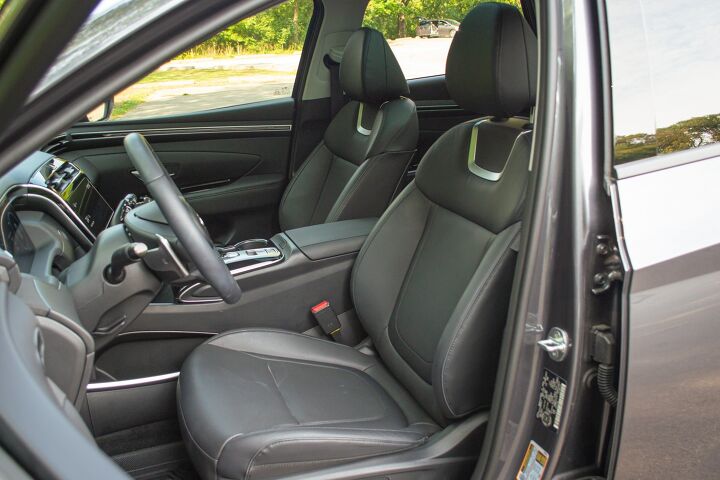

































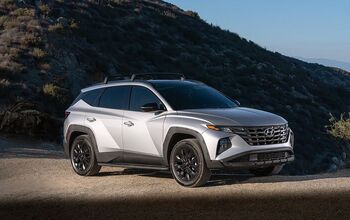

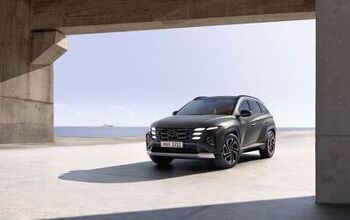
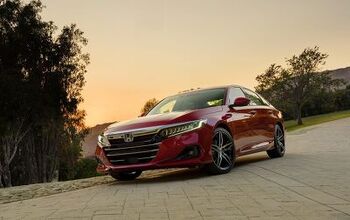
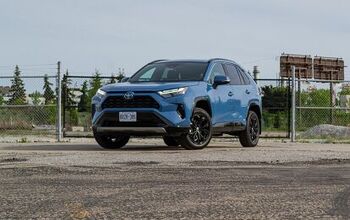
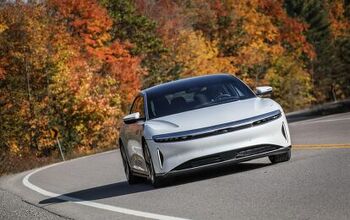
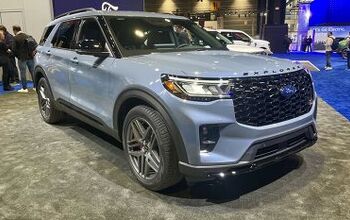


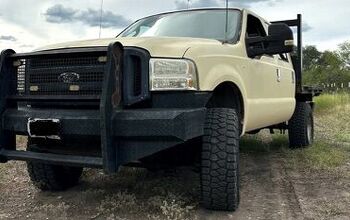





Comments
Join the conversation
Seriously ready to buy Tuscon Plug-in Hybrid
I would love to drive the Tucson. Thank you!